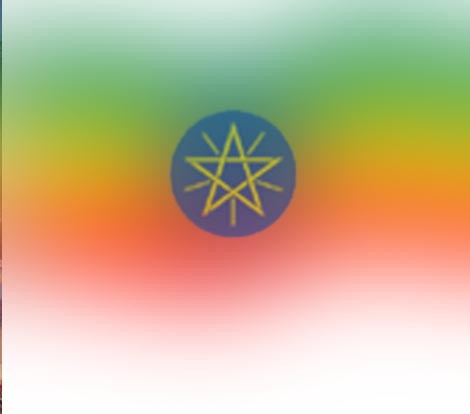|
|
|
 | |
ETHIOPIA |
|
|
Land · Climate ·
Natural Resource · Population · Religion · Culture · Map · Economy |
INTRODUCTION |
|||
 flug |
Ethiopia, republic in northeastern Africa, officially the Federal
Democratic Republic of Ethiopia. Ethiopia is bounded on the northeast by Eritrea and
Djibouti, on the east and southeast by Somali, on the southwest by Kenya, and on the west and northwest by Sudan. A high plateau capped with rugged mountains covers much of
Ethiopia; lowland deserts surround the plateau region. Agriculture, the country’s chief
economic activity, is carrie out in the fertile plateau area.Ethiopia has a diverse
population, with more than 70 distinct ethnic and linguistic groups. The 1995 constitution established Ethiopia as a federation and created nine regions for the country’s main
ethnic groups.Known as Abyssinia until the 20th century, Ethiopia is the oldest
independent nation in Africa. It was home to the powerful Christian kingdom of Aksum in the first centuries AD and became a Christian empire in the 15th century. After the 1500s
Ethiopia divided into a number of small kingdoms, which were reunified by Menelik II in
the 1880s. Eritrea, which had been part of Ethiopia since the 1950s, became an independent nation in 1993 after a protracted civil war. Addis Ababa is Ethiopia’s capital and largest city. | ||
|
Land |
| ||
|
Ethiopia covers an area of 1,133,380 sq km (437,600 sq mi). The heart of the country is a high tableland, known as the Ethiopian Plateau, that covers more than half the
total area of the country. The plateau is split diagonally in a northeastern to
southwestern direction by the Great Rift Valley.
| |||
Climate |
Go Top | ||
|
The climate of Ethiopia varies mainly according to elevation. The tropical zone below approximately 1,800 m (approximately 6,000 ft) has an average
annual temperature of about 27°C (about 80°F) and receives less than about 500 mm
(about 20 in) of rain annually. The subtropical zone, which includes most of the
highland plateau and is between about 1,800 and 2,400 m (about 6,000 and 8,000 ft) in
elevation, has an average temperature of about 22°C (about 72°F) with an annual
rainfall ranging from about 500 to 1,500 mm (about 20 to 60 in). Above approximately 2,400 m (approximately 8,000 ft) is a temperate zone with an average temperature
of about 16°C (about 61°F) and an annual rainfall between about 1,300 and 1,800 mm
(about 50 and 70 in). The principal rainy season occurs between mid-June and
September, followed by a dry season that may be interrupted in February or March by a
short rainy season. | |||
Natural Resources |
Go Top | ||
The resources of Ethiopia are primarily agricultural. The plateau area is fertile and
largely undeveloped. The wide range of soils, climate, and elevations permits the
production of a diversified range of agricultural commodities. A variety of mineral
deposits exist; iron, copper, petroleum, salt, potash, gold, and platinum are the
principal ones that have been commercially exploited. | |||
POPULATION |
Go Top | ||
Occupations in agriculture support 89 percent of all Ethiopians. Most agriculture consists
of subsistence farming. The population is concentrated heavily in the central plateau
region, where agricultural resources are most developed. The ethnic composition is
extremely diverse, as a result of racial and linguistic integration that began in ancient
times. | |||
|
Religion |
Go Top | ||
The Ethiopian Orthodox Union church, an autonomous Christian sect headed by a patriarch and closely related to the Coptic church of Egypt, was the state church of Ethiopia
until 1974.
About 40 percent of the people of Ethiopia are Christians, and Christianity is
predominant in the north. All the southern regions have Muslim majorities, who
represent about 45 percent of the country’s population. The south also contains
considerable numbers of animists. A sect known as Beta Israel or Falashas, who practice a type of Judaism that probably dates back to contact with early Arabian Jews, were
airlifted to Israel in 1991 during Ethiopia’s civil war. | |||
 |
Culture |
Go Top | |
The most significant area of Ethiopian culture is in the field of literature,
represented predominantly by translations from ancient Greek, Arabic, and other
languages into the ancient Geez and modern Amharic. Most of the works are theological
or mythological in nature. Secular literature is largely confined to history.
Ecclesiastical architecture is relatively rich because of the early advent of
Christianity in the country. Such structures and their frescoes usually show both
Byzantine and Coptic influences. Ethiopia’s skillful and imaginative silversmithing is
also notable. | |||
ECONOMY |
Go Top | ||
Ethiopia is one of the world’s poorest nations, with a per-capita gross domestic
product (GDP of $100 a year in 2000). The economy of Ethiopia remains heavily dependent on the earnings of the agricultural sector. Participation by most of the people in the
monetary economy is limited; much trading is conducted by barter in local markets. The
estimated annual budget in 1993 included $630 million in revenues and $968 million in
expenditures. | |||
Source
Microsoft ® Encarta ® Reference Library 2003.
© 1993-2002 Microsoft Corporation. All rights reserved.